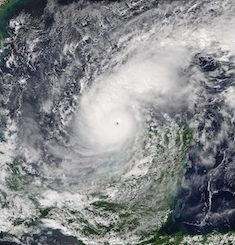
[dropcap]I[/dropcap] was a 16-year-old addicted to drugs. Now, I’ve got three beautiful children, that live with my mum, because I can’t look after them,” Kayleigh says, looking directly above the camera and into the producer’s eyes. “Because of the drugs.” She pauses. “They should’ve been enough, but they weren’t.”
This documentary gives a glimpse into the quality of life in Holbeck, an area in Leeds where sex work is legalised in a managed area between certain times. The cameras follow a dozen women around as they go about their lives, get high, sell their bodies and deal with relationships.
The show sees very little censorship, as do the prostitutes. Crack pipes, needles, condoms, heroin and picked wounded skin, are shown in all their glory. However, the ‘punters’, the men who buy sex, are kept anonymous. They’re seen as a passerby, someone who has money for pleasure and goes back to their cosy homes and full-time jobs when they’re done. For the women, however, the lack of censorship represents an important part of their lives, they have hit rock bottom several times. These women have nothing to hide and nothing is hidden from them.
“I don’t like coming down here, but it’s a risk we all take, d’ya know what I mean? I don’t know who I’m getting in the car with,” Amy says as she stands on the side of a busy, dark road as cold November rain falls. “It could be a serial killer, it could be a rapist, you could be getting in the car with anyone.”
Amsterdam’s Red-Light District sees beautiful women flaunting their curves behind glass doors in alleyways, in cosy rooms where they’re warm and sheltered. In Holbeck however, women linger on the side of the road, until a car stops and flashes its lights. They then hop in and the client drops them back sometime later.
“£20,” Corrin says after she returns from a punter’s Ford. “And he wants to see me again on Friday, at 8 o’clock.”
Holbeck is portrayed as rainy, grey and grim. The streets are awash with cars and passersby, but no one stops. Flats are small, squalid and dirty. A sombre instrumental soundtrack accompanies these young girls, bad skin caked in cheap makeup, exhausted eyes and bitten nails on rough, coarse hands. We see a depressing glimpse into a life most of us can’t imagine. Nearly all of the workers in the documentary are under 30 years old, all rotted with the deadly disease that is addiction. That is the main reason the women sell their bodies, welfare benefits may cover their bare essentials like food and rent, but the sex work pays for their drug habits.
“Oh its 7 o’clock, I better get ready.” Sammie Jo exclaims, cigarette hanging from her lips. The camera wavers slightly and the producer asks, “Where you going?” She turns her head to look at him, raising her eyes above the camera frame. “Selling my [vagina] off Holbeck,” she says.
Gabija Gataveckaite



